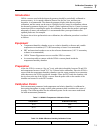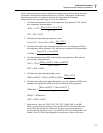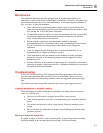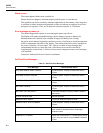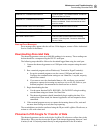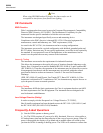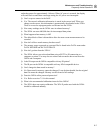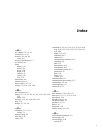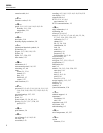
5020A
Users Manual
8-6
Note
When using IRCOMM and an IR dongle, the data transfer can be
susceptible to interference from fluorescent lighting.
CE Comments
EMC Directive
Fluke’s equipment has been tested to meet the European Electromagnetic Compatibility
Directive (EMC Directive, 89/336/EEC). The Declaration of Conformity for your
instrument lists the specific standards to which the unit was tested.
The instrument was designed specifically as a test and measuring device.
Compliance to the EMC directive is through IEC 61326-1 Electrical equipment for
measurement, control and laboratory use - EMC requirements (1998).
As noted in the IEC 61326-1, the instrument can have varying configurations.
The instrument was tested in a typical configuration with shielded, grounded probe and
RS-232 cables. Emissions may, in non-typical applications, exceed the levels required by
the standard. It is not practical to test all configurations, as the manufacturer has no
control over the probes the user may connect to the instrument.
Immunity Testing
The instrument was tested to the requirements for industrial locations.
This allows the instrument to be used in all types of locations from the laboratory to the
factory floor. Criterion B was used for Radiated RF (IEC 61000-4-3) and Conducted RF
(IEC 61000-4-6). Therefore, the operation of the instrument may be affected by excessive
electromagnetic interference and the instrument may not perform within the normal
specification limits in such an environment. Criterion C was used for Electrostatic
Discharge
(ESD, IEC 61000-4-2) and Electric Fast Transit (EFT, Burst, IEC 61000-4-4). If the
instrument is subjected to EFT conditions at 2kV, the instrument may require the user to
cycle the power to return to normal operation.
Emission Testing
The instrument fulfills the limit requirements for Class A equipment but does not fulfill
the limit requirements for Class B equipment. The instrument was not designed to be
used in domestic establishments.
Low Voltage Directive (Safety)
In order to comply with the European Low Voltage Directive (73/23/EEC),
Hart Scientific equipment has been designed to meet the IEC 1010-1 (EN 61010-1) and
the IEC 1010-2-010 (EN 61010-2-010) standards.
Frequently Asked Questions
Q. Can the 5020A operate on battery power?
A. No. The 5020A requires AC power to be fully functional. However, it does utilize a
9V backup battery that runs the data collection in the event of a power outage. When AC
power is interrupted, the display will go blank and an audible alarm will sound to alert
you that the 5020A is running on backup power. The 5020A will continue to collect data



